
Neck Sharpies: Making Space for Speed

So you know Josh Gattis has a philosophy. Michigan's new offensive coordinator, a former safety with a short trip in the NFL, spent the bulk of his coaching career as part of the brain trust propping up James Franklin. Two of those seasons came under Joe Moorhead, now head coach of Mississippi State, and one of the premier offensive minds in the game.
Now, the concept of speed in space is just barely more modern than toughness. What we're really talking about when we say "philosophy" is a slider: how much do your play designs emphasize that one aspect, and how. In historical Franklin spreads—and Rich Rodriguez offenses I should add—the stress put on the defense is extremely horizontal.
Verticality was an important changeup of course but note that resources in his base play are all about generating horizontal spacing: the defensive front has to control outside gaps that are widening every second, with the QB run and a pre-snap bubble read to force defenses to keep their material to the backside.
Moorhead's philosophy, however, is extremely vertical. Take the first two plays he ran against us in 2017:
These plays also threaten horizontally—that second play is an Inverted Veer, the modern cousin of the standard "get to the edge or cut behind overpursuit" play of the 20th century. He's flipped the QB and RB for some extra flavor but the base concept is to drag three defenders far away from the play on the wide side and threaten to run outside the other way, pulling a backside guard and optioning the last guy on the line of scrimmage to get numbers over there.
But note how he uses the receivers here. In both instances Moorhead is using three of his eligible receivers to go long, and running a fourth underneath. It's a big material commitment, but a hallmark of his offenses. And they're not just for show; Moorhead's offenses almost always feature one or two receivers with double-digit TDs and 17 yards per catch on 55% catch rates to back up his Dr. Strangelove reputation.
Other hallmarks of Moorhead designs are he likes to get underneath defensive players moving laterally before and after the snap, and he likes to use creative options and things that look like options to freeze edge defenders. Coach Matt Wyatt of RenasantNation.com had a great video last year on Moorhead's offense and the creative ways they got the ball to Saquon Barkley, but see if you can see these concepts at play:
Warning: Our 2017 Penn State game features after some OSU & MSU
Given Josh Gattis really comes from the Franklin tree, I was very interested in the Spring Game to see how much of Moorhead he'd adopted. The answer: I think most of it.
[After THE JUMP: Al Borges?!?]
--------------------------------------------
So here's an early play that most Michigan fans will remember as "hello, Mike Sainristil":
now with sound!
It's a crossing route from the slot receiver, who's lined up as a second running back. It also was a Rock, Paper, Scissors win, since it beat a six-man pressure. The absence of any linebackers dropping is what turned a seven-yard completion into a touchdown run, but see if you can spot all the Moorheadian elements in its design:
Right off the bat you've got a minimum of two guys attacking vertically. They're running directly at the safeties to start—keep those guys back and out of the way of the play—but those routes then turn into a sideline and middle of the field attack:
This has a good chance of opening up a 1-on-1 matchup between two good downfield threats. If the defense commits a third defender to those deep routes, well, more space underneath.
The underneath read is just a two-man stick concept that you'll find in any West Coast playbook: isolate a middle zone defender horizontally between two receivers and throw it to the one he's less likely to get to:
So far this is nothing you won't find in an Al Borges offense. I use Notorious Al not because hur durr Borges but because the motion and the initial attack are very much like the best part of the Borgesian passing philosophy:
I took this snap because it's the last frame before spring game cameraman went back to nostril vision. Look at Josh Metellus (yellow circle) and how many dudes are running in his general direction. Put yourself in Josh's mind here. You've got a tight end running right at you, and you've got to make sure you're over him long enough for Khaleke to not get instaburned before the free safety—J'Marick Woods—can be of assistance. Behind McKeon there's that athletic freak Ronnie Bell coming on a slant or snag. Then there's the H, Mike Sainristil coming out of the backfield, and maybe Tru Wilson going out into the flat behind him. Yeah, Josh, you've got your job in this defense and your buddies' have theirs, but it's hard to stick to your programming when you're just some draftee and the entire invasion is pointing at you. This was Borges's favorite way to start a play too.
The difference, however, is in the details. Borges never seemed to care who was doing what (in fact his offenses were most successful when his players changed the call), and never seemed to think about what defenders thought about. Josh Gattis is a former NFL safety. He knows exactly what's going through Metellus's mind at the start of this play. And he also knows exactly what messes with it.
The broadcast didn't catch the opening play, but it was out of a similar set with similar motion, and ended with an end-around to Sainristil. So that's in your mind right there when both receivers to that side run right at you, and even though you're doing your job and picking up Sainristil out of the backfield, you're now faced with a new dilemma:
Metellus has Sainristil wherever he goes, and at the point of the shimmy there's a very credible threat of the slot bug going to the fade route. We've gone over this a thousand times with Michigan's Cover 1: unless you're possessed with NFL-caliber physical gifts, you have to keep outside leverage to prevent the fade because you can always break on an in route. Metellus has to stay over that dotted line route until Sainristil commits to an inside break.
Here's where the personnel comes in to play. What a little slot bug gives you right there is that elite acceleration off the in-break. Metellus has less time here than he would against, say, Tarik Black. Maybe even Donovan Peoples-Jones. That's your speed in space, and it's very Moorheadian. You can right away see the structural problems these attacks create for a defense like Michigan's—if you play a safety with outside leverage you need to keep a middle linebacker around to cover the inside.
But this also creates problems for the base zone defenses that Michigan will face. Two vertical receivers against Cover 3 will result in this same gap when you lose the other safety to getting over top of those routes. Against Cover 2 and Quarters the McKeon route should drag away the strong safety and put the slot receiver on a linebacker. And the more Michigan reps this stuff, they can start adding that fade route as an option route, and really unlock the potential of their slot receivers.
And it all comes back to the same principles:
- Put the fear of horizontality into the defense
- Create spacing and/or advantageous downfield matchups by running multiple vertical routes
- Dictate matchups between your best athletes and structural weaknesses in the opponent
There's another thing that I am almost certain was part of the design. It's this:
I saw this a few times from Penn State in 2017 and then I saw a receiver get yelled at for running a similar route too short of referee. Metellus is already too far behind for it to matter but putting the ball just past the official creates a pick not unlike that of the mesh play. You can't be too obvious about it, but few teams are beneath using the extra matter in the middle of the field to win those crucial inches. I'm sure as a safety this drove Gattis nuts. If so, his revenge tour is off to a promising start.
I'll get into a run that also used these concepts in the next one of these.
Deliciously evil. Hope we can execute this stuff this year. Patterson seems like the right type of QB to run it, and with a (finally) half-decent o-line, I'm optimistic.
If he really has installed the Moorehead offense it can hopefully be effective year 1. PSU went from the 70s to 20s in S&P+ offensive rank in his first year and then to 5th in his second year. Michigan is starting from a better spot with an offense ranked 25th and seems to have a competent OL which was something Moorehead was constantly hampered by at PSU.
That's what excites me most. Penn State in 2016 still had the tissue paper oline from the Hackenburg years, but modernizing their offense got them a B1G title despite that. We have potentially the best offensive line in the B1G now (woo, finally) and all the talent you could ask for on offense. We can and should do better than last year, including beating Ohio State, who has had a better offense than us for almost 20 years.
I am excited about Moorehead.
Aren’t we all
This was my favorite play of the whole scrimmage from the offense. It just looked so damn good and the options seemed so abundant. I loved the piece about detail as well, last year it seemed like we would have had McKeon or Nico trying to run that little shimmy and crossing route. Sainristil, Bell and hopefully Giles Jackson have field days against teams who try and have linebackers stick with them (fuck you joe bachie).
So, like Richrod but its gonna work. Right?
Uses some Rich Rod but not much more than they did last year. More like art briles.
Yup, much more vertical than Rich Rod, and much more diverse passing attack (whereas Rich Rod, especially by the time he got to Michigan, relied heavily on the very basic pass concepts as add ons to his rush attack).
I've wanted a vertical passing game since Carr retired.
I am intrigued now.
Great breakdown, Seth. Question - with the vertical stretch elments, are those reads as well here for Patterson? I can't tell if he's checking those route and going to Sainristil as a third read here knowing he should be getting open if the deep stuff isn't available, or if he's selling those routes with his eyes knowing the slot/back is his 1st read here. Would be interested what you think the QB progressions are in plays like this which are designed for creating mid-level space but also try to put safeties in bad positions where deep routes may be 1 on 1 and open for guys like Black and Collins.
Yes Patterson reads those routes but they're simple reads to see how many guys are pulled away by them. Presumably if one of those outside receivers get man zero coverage Patterson will throw to that guy in a position most advantageous to him.
Those routes can't just be there to look pretty. See: the times Urban Meyer's offense was shut down. Michigan State used to be great at this because they had such talented defenders in the secondary. They could put their CBs and safeties into those man-a-mano coverages and win the majority of them anyway.
In the Air Raid offense, some coaches teach on the "Mesh" concept to have one crossing receiver run in front of the umpire and one to run behind the umpire. So in addition to dealing with a standard "pick" route and having to deal with two guys running in the opposite direction, you now have a (generally) stationary and defenseless umpire standing in the way.
Umpires shouldn’t be that close to the line of scrimmage then.
If you’re scheming plays based on ump position something with ump position needs to change.
Well they need to see the line. Umps don't catch enough as it is.
Of course we live in a world where the NCAA makes everything awful, but if I can have a pony, I'd formalize discretion given to umps to take one step in any direction and tit-for-tat that sort of nonsense. Run right at me and I'm going to pick off your own receiver just for being cheap. Play the fucking sport the way it's supposed to be played.
But Gattis is being pragmatic about this; other teams are already doing it and refs aren't calling it and it's not unethical, so if you don't hop on the bandwagon you're just putting yourself at a disadvantage.
Replace umps with drones. They could also do jump balls in basketball games and deliver beer at Tiger games.
It generally doesn't matter where the umpire stands. A good offense is instructed to run these types of plays to intentionally put the official in jeopardy...an offensive key is the position of the official. People get all hot and bothered by "If you're not cheating you're not trying" but this is in fact a part of the game. Everyone is "cheating"...that is why there are officials out there...cheat better is a part of the game too.
Should've been doing this type of offense every season for the past X years. Where X is either Harbaugh took over as coach or Rich Rod took over as coach. Take your pick.
Question...if our offense blows up this year how long can we hope to retain Gattis?
I don't know how to come up with a reasonable answer to this, but I think we may be able to expect a couple of years out of Gattis at least. Being that he is the OC at Michigan, there isn't any advancement possibilities other than becoming an HC somewhere. I don't see that happening after year one as an OC, regardless of the results, but you never know.
PSU only got 2 years out of Moorhead, though he was a HC before that, so not quite the same thing. I'd expect 2 to 4 years from Gattis if he is successful here before he goes on to be the next hot HC candidate..
I would say, if he's as good as we hope for, we'll have 2 years tops. That's how long Urban was able to hold to his assistants, and Saban usually could hold on to his good ones for 2 years (though now he's lucky to get more than 1 year).
He's a first time play caller and OC. Slow down.
A couple, not many, but probably more than just one. He will be a head coach one day, but nobody is going to hire him after one year of being a successful. That being said, it won't be long before a young, sharp offensive-minded, excellent recruiting guy has people knocking on his door.
One important unknown is what Gattis wants his next step to be. Would he coach in the MAC if that was his first HC offer or does he want to hold out for a Power 5 HC job?
I think we have a pretty smart QB coach who will be soaking it in. Learn and grow.
April 23rd, 2019 at 12:30 PM ^
I hope so. He his Moorhead's understudy. We need to find Gattis' understudy.
I usually have trouble maintaining focus during the Neck Sharpies. Not so much this time.
Same here. I usually give Sharpies a few paragraphs before I give up due to the arcane nature, but this was really well done.
First, this was a great write up and very helpful for understanding the basic concepts of the Gattis/Moorehead offense.
I'm curious what happens in red zone situations? I know Brian likes to say there's no such thing as red zone offense but if one of the core principals is to put vertical stress on the defense and said vertical stress is limited due to the proximity of the endzone, what does Gattis do? Obviously, every offense has to deal with shorter, goal-to-go situations. Just wondering if Gattis starts to look like everyone else in those situations or whether there is a "speed in space" concept that he can deploy there as well.
Mason and Van Summerin duel backs. Collins, DPJ, Black out wide.
This is a great question. I think I'm going to need another Neck Sharpies to answer it.
I'm glad it made sense. Looking forward to a future Neck Sharpies for the answer!
Rub routes and tripe option stuff.
Mmm tripe
April 22nd, 2019 at 11:26 PM ^
There is red zone offense (and defense) for the very reason you cite--there's limited vertical space-You can't line up and run 4 verticals on the 6 yard line. You also can't really run true Cover 2--hard for the safety to get over the #1 WR on hole balls behind the cornerback.
So you get out your man beaters (defense you are likely to see): Magnus mentioned rub routes. I'd add stacked WRs. The above play could have been run with Sainristil going to the flat now and daring Metullus to navigate traffic--even if he does, you still get "speed in space." Other man beaters in the red zone include slants, fades, and corner routes from a #2 or a #3 WR.
The other answer is your more trick play type of stuff which you see often in this area of the field: Philly special is a great example. Sprint and boot plays where you throwback to a TE, WR, or even the RB. Double pass. I'd also add FiB/FSL formations that isolate one WR to the Field and gives him a lot of space to work (again speed in space).
As for run plays, Magnus mentioned option type of stuff which is good against man (hello Army!). The harder part about running it down here is the FS is just so much more involved because there's no space to cover. Hence why a lot of teams go 22 personnel (2 RB/2 TE). While you can't block all 10 guys, you do force CBs and safeties to be much more run fit conscious. There's also a big difference between being asked to tackle a WR on a bubble play as opposed to a RB on power.
To add to the other responses, one answer is to go vertical in a different sense -- along the z-axis. It's difficult to take advantage of height mismatches on downfield passes because we're talking a margin of error of inches on a 30+ yard throw made under duress. If you can just get it to the receiver without making him break stride you're pretty good. But 6 yards is a different story, which is where kaiju receivers and tight ends come into play. In addition to the usual ways of picking up cheap yards, it helps to have a Jake Butt or Devin Funchess type who can go up to get a jump ball that most DBs can only look at. Michigan in particular has been looking for big corners these days but there are only so many tall guys who can stay with slot bugs.
Unfortunately, Michigan hasn't actively taken advantage of height mismatches, and I don't know if Gattis is likely to change that.
Schoonmaker, Selzer and/or Hayes!!! Two, or all three, on the field would make a nice jumbo package dilemma for a defense to adjust to.
I'm almost positive between DPJ and Collins last year, they caught all but 1 jump ball that was thrown to them, including fades.
Not always the best approach, but that's always an option with the height of Collins and vertical of DPJ.
I'm not terribly excited about converting short yardage stuff from the gun with RBs we haven't seen/aren't built to bash into lines and grind out a yard or 2 without a full head of steam, but am waiting to see how that goes.
These are even better when they are about a potentially exciting offense.
Great stuff. Really like how you highlighted how the play stresses a safety. Easy to see the play once in full speed and chalk it up to Metellus getting burned, so this is really nice context.
Why does Gattis get credit for the good PSU offenses of 2016 and 2017, but none of the blame for the bad PSU offenses of 2014 and 2015? He played the same role each of those years, correct?
He doesn't get credit for any of the Penn State offenses except the receivers (who were good). James Franklin is a spread OC by trade and was the guy doing a lot of the design and play calling in 2014 and 15. Then it was Joe Moorhead. So we are not looking at an established guy, but the assistant of established guys, and trying to see what he took from his tutors.
What do you think explains Moorhead’s relatively disappointing offense with Miss. St. last year?
Nick Fitzgerald can't throw. He's a poor man's Dak Prescott/closer to Tim Tebow (NFL version).
They also lack the receiving threats PSU had (coached by Gattis).
Same offensive personnel they had in 2017. They had 10 starters back on offense yet fell dramatically in terms of scoring and total offense.
I don't think anyone is assigning credit. Seth is describing his philosophy , which if you've paid attention to Gattis' press conferences, is Moorehead. Further, he's trying to understand how much of the Moorehead philosophy is actually in Gattis' offense, and using the spring game as the data available.
So the 2014 and 2015 offenses don't have any bearing on this, because Gattis hasn't said that's what he'll be running.
Thank God for Neck Sharpies.
Franklin was propped up by Moorhead, Gattis, Barkley, McSorley, Gesicki, Godwin, Hamilton. Without all the great coaches he hired and players he recruited he would be nothing! Oh wait that's his job.
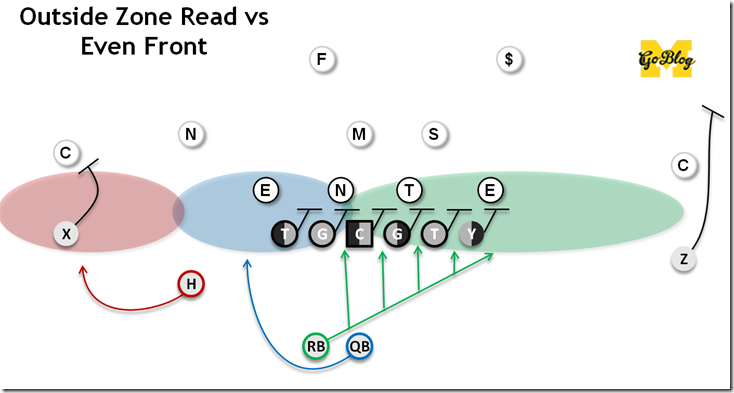
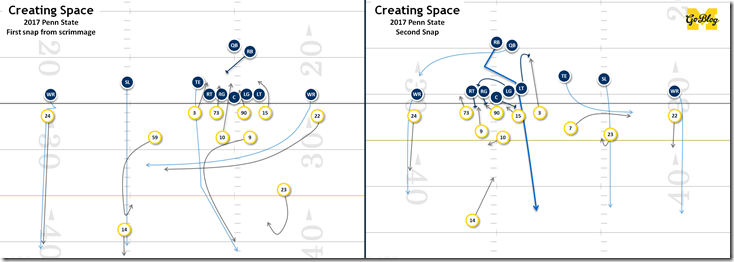
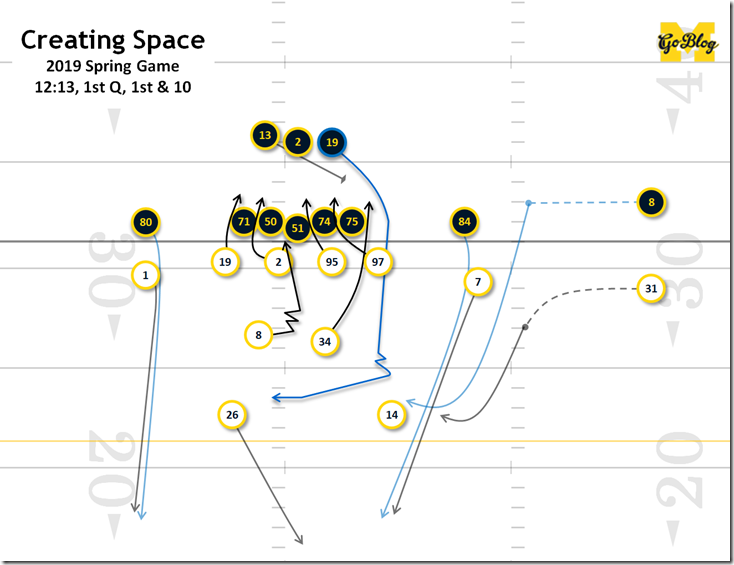
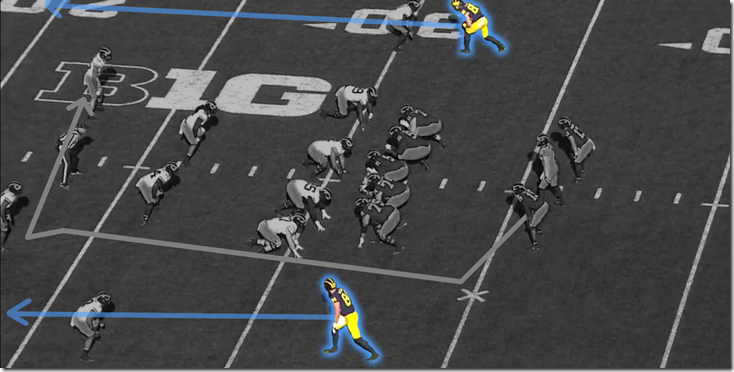
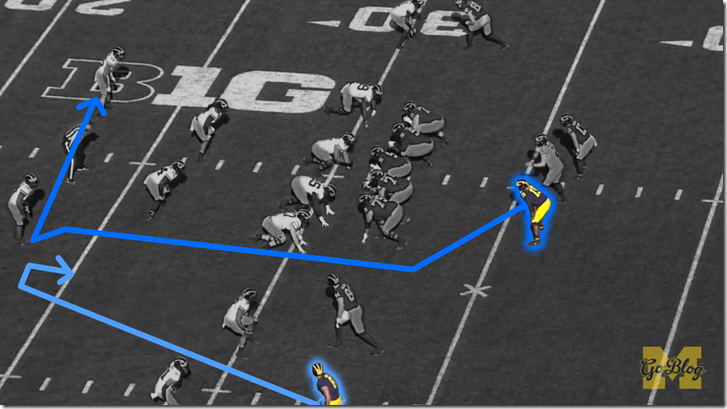
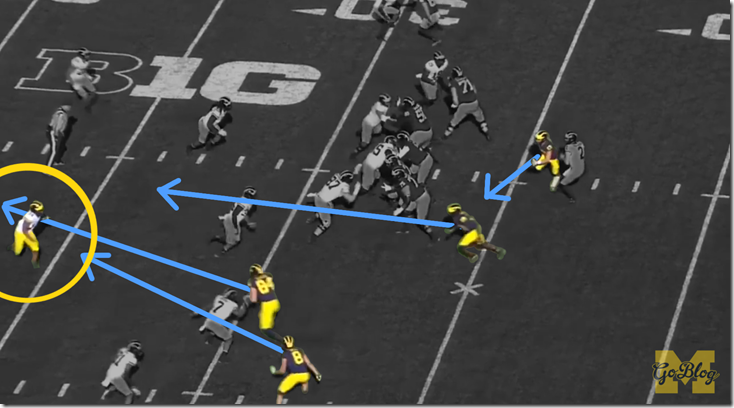
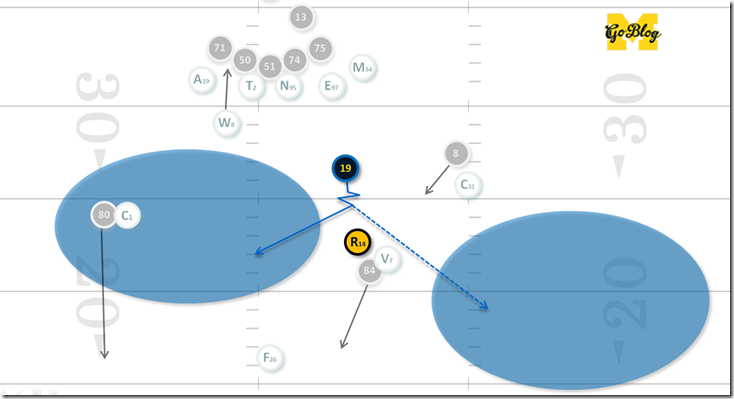

Comments